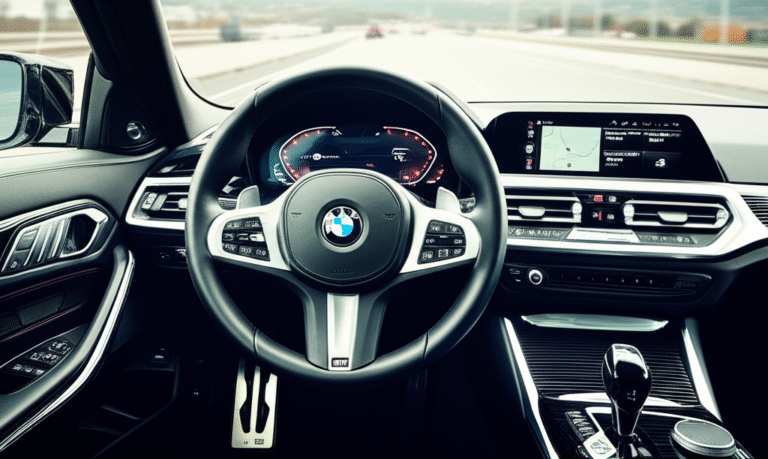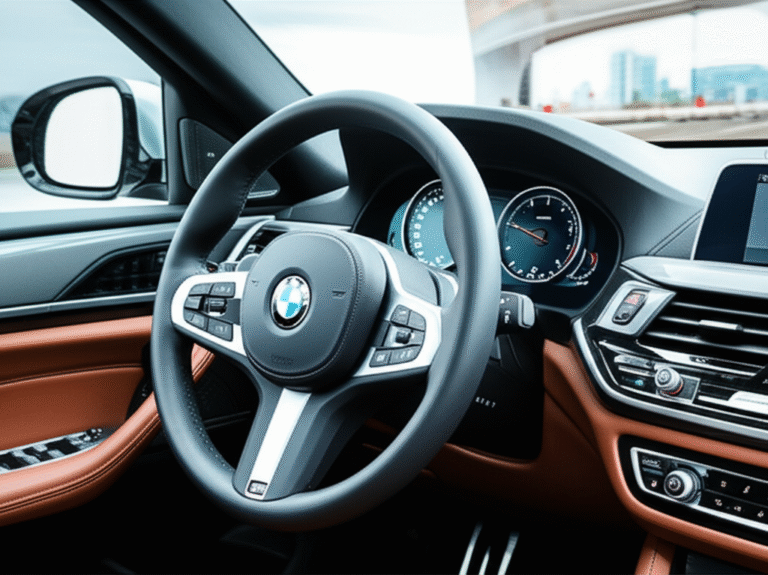BMW M5 Fuel Tank Capacity: 6 Facts
The BMW M5 fuel tank capacity is a crucial piece of information for any owner or enthusiast, typically holding around 21.1 gallons, but varying slightly by generation. Understanding this capacity helps you plan longer drives and fuel stops more effectively.
Key Takeaways
- Discover the precise BMW M5 fuel tank capacity.
- Learn how tank size impacts your driving range.
- Find out if M5 fuel tank capacity changes by model year.
- Understand factors affecting your fuel economy.
- Get tips for maximizing your BMW M5’s fuel efficiency.
- Explore the benefits of knowing your M5 fuel capacity.
As a driver of a BMW M5, you command a remarkable blend of performance and luxury. This iconic sedan offers exhilarating acceleration and sophisticated handling. But like any high-performance machine, it requires careful attention to its needs, and one of the most fundamental is understanding its fuel capacity. For many car owners, the exact size of their fuel tank can be a bit of a mystery, often overshadowed by horsepower figures and top speeds. Knowing your BMW M5 fuel tank capacity is essential for planning those spontaneous road trips, commuting efficiently, and avoiding any unwelcome surprises at the gas pump. This guide will demystify the fuel tank capacity of your M5, offering clear, factual information to make your driving experience smoother and more informed. Let’s dive into the six key facts you need to know about your BMW M5’s fuel tank.
1. Understanding the Standard BMW M5 Fuel Tank Capacity

The BMW M5, renowned for its potent engine and driving dynamics, also possesses a thoughtfully designed fuel system. For most recent generations of the M5, the standard fuel tank capacity is approximately 21.1 U.S. gallons (around 80 liters). This generous capacity is a deliberate engineering choice, balancing the need for a substantial driving range with the practicalities of vehicle design and weight distribution. A larger fuel tank means fewer stops on long journeys, allowing you to enjoy the M5’s performance without constant interruptions for refueling. This capacity is consistent across many of the F90 generation M5 models, making it a reliable figure for many current owners. It’s important to note that while this is the standard, minor variations can occur based on specific market regulations or subtle design tweaks between model years. Always consult your owner’s manual for the most precise figure for your specific M5 model and year.
2. How Fuel Tank Capacity Affects Your Driving Range
Your BMW M5’s fuel tank capacity is directly linked to its potential driving range – the distance you can travel on a single tank of gas. While the tank size is fixed at around 21.1 gallons for many models, the actual distance you cover will depend heavily on your driving habits and the specific M5 model’s fuel efficiency. For instance, a more aggressive driving style, characterized by rapid acceleration and high speeds, will consume fuel much faster, significantly reducing your range. Conversely, gentle, consistent driving, especially on highways, will maximize your miles per gallon (MPG) and extend your range. If you’re planning a long road trip, understanding both your M5’s fuel tank capacity and its typical MPG under your driving conditions will help you plot your refueling stops efficiently. A rough estimate for the M5’s highway range, given its typical MPG figures, can often exceed 300 miles on a full tank, but this is highly variable. For a more precise understanding, monitoring your car’s trip computer is invaluable.
3. BMW M5 Fuel Tank Capacity Benchmarks Across Generations

While the 21.1-gallon capacity is common for recent M5 models, it’s interesting to see how this has evolved over the M5’s storied history. While specific figures can vary, many earlier generations also featured substantial fuel tanks to support their grand touring capabilities. For example, the E60 M5 generation, known for its powerful V10 engine, also boasted a fuel tank capacity of around 16.6 gallons (approximately 63 liters), which was generous for its time. The E39 M5 generation typically had a capacity of about 18.0 gallons (around 68 liters). These figures highlight BMW’s consistent approach to equipping their M5 models with tanks that support their intended use as high-performance vehicles capable of long-distance travel. The increase in capacity in later models reflects both the increasing size of the vehicles and the engineering to accommodate larger fuel pumps and emissions control systems. Below is a comparison of approximate fuel tank capacities for select BMW M5 generations:
| BMW M5 Generation | Approximate Fuel Tank Capacity (U.S. Gallons) | Approximate Fuel Tank Capacity (Liters) |
|---|---|---|
| F90 (2018-Present) | 21.1 | 80 |
| F10/F11 (2011-2016) | 21.1 | 80 |
| E60/E61 (2005-2010) | 16.6 | 63 |
| E39 (1998-2003) | 18.0 | 68 |
| E34 (1988-1996) | 21.1 | 80 |
Note: These figures are approximate and may vary slightly based on specific model year and region. Always refer to your vehicle’s owner’s manual for exact specifications.
4. Factors Influencing Your M5’s Fuel Economy
While your BMW M5’s fuel tank capacity dictates how much fuel it can hold, its fuel economy determines how far that fuel will take you. Several factors significantly influence your M5’s MPG. Firstly, driving style is paramount. Aggressive acceleration, hard braking, and high speeds consume fuel rapidly. Smooth, consistent acceleration and anticipating traffic flow can dramatically improve efficiency. Secondly, vehicle maintenance plays a crucial role. Properly inflated tires reduce rolling resistance, and regular engine tune-ups, including clean air filters and spark plugs, ensure the engine runs optimally. The type of fuel used can also make a difference; using the manufacturer-recommended premium gasoline is essential for optimal performance and efficiency in a high-compression engine like the M5’s. Environmental factors also contribute: driving in stop-and-go city traffic is inherently less fuel-efficient than cruising on the open highway. For official EPA estimates on fuel economy for specific M5 models, you can visit the EPA’s Fuel Economy website.
5. Tips for Maximizing Your BMW M5’s Fuel Efficiency
Maximizing your BMW M5’s fuel efficiency isn’t just about saving money; it’s about making the most of the incredible engineering under the hood. Here are some practical tips to help you achieve better MPG:
- Drive Smoothly: Avoid sudden acceleration and braking. Gently apply the accelerator and coast when possible.
- Maintain Optimal Tire Pressure: Underinflated tires increase rolling resistance, forcing your engine to work harder. Check your tire pressure regularly and keep it at the manufacturer’s recommended level.
- Reduce Weight: Remove any unnecessary heavy items from your trunk or cabin. Extra weight requires more fuel to move.
- Minimize Idling: If you’re going to be stopped for more than a minute, it’s generally more fuel-efficient to turn off the engine.
- Use Eco Mode (If Available): Many modern BMWs, including the M5, feature different driving modes. “Eco Pro” or similar modes are designed to optimize fuel consumption.
- Plan Your Routes: Combine errands to avoid multiple cold starts and short trips, which are less fuel-efficient. Utilize navigation systems to find the most direct routes and avoid unnecessary mileage.
- Keep Up with Maintenance: Ensure your M5 receives regular oil changes, air filter replacements, and spark plug checks. A well-maintained engine runs more efficiently.
Pro Tip: Before embarking on a long road trip, ensure your tires are properly inflated and that you have a full tank of premium gasoline. This simple preparation can significantly improve your vehicle’s range and fuel efficiency.
6. Understanding the Fuel Reserve and Warning Light
Every car, including your BMW M5, has a fuel reserve – a small amount of fuel left in the tank after the low fuel warning light illuminates. This reserve is a safety feature to prevent the engine from stalling unexpectedly. For most vehicles, including the M5, this reserve is typically around 2-3 gallons. When your M5’s low fuel warning light comes on, you generally have enough fuel to travel an estimated 30-50 miles, depending on your driving conditions and real-time fuel consumption. However, it’s strongly advised not to rely on this reserve regularly. Running the fuel tank very low can potentially draw sediment from the bottom of the tank into the fuel system, which could lead to costly repairs. It can also cause the fuel pump to overheat as it relies on gasoline for cooling. Therefore, it’s best practice to refuel when the gauge reaches or slightly exceeds the quarter-tank mark, ensuring your M5’s fuel system remains in optimal condition.
Frequently Asked Questions About BMW M5 Fuel Tank Capacity
How many gallons is a BMW M5 fuel tank?
Most modern BMW M5 models, particularly the F90 generation, have a fuel tank capacity of approximately 21.1 U.S. gallons (about 80 liters). Older generations may have slightly different capacities.
Can I put regular gasoline in my BMW M5?
No, BMW M5 vehicles are designed to run on premium gasoline (at least 91 octane). Using regular gasoline can lead to reduced performance, potential engine knocking, and long-term engine damage.
What does the low fuel warning light mean on my M5?
The low fuel warning light indicates that your fuel level is critically low, and you have a limited amount of fuel remaining (typically 2-3 gallons) to reach a gas station. It’s recommended to refuel as soon as possible.
How far can I drive on a full tank of gas in my M5?
The driving range on a full tank varies significantly based on driving conditions, your driving style, and the specific M5 model. Generally, you can expect a highway range of over 300 miles, but city driving will reduce this considerably.
Does the BMW M5 fuel tank capacity change with different trim levels?
Typically, the fuel tank capacity remains consistent across different trim levels within the same M5 generation. The primary variations in capacity occur between different generations of the M5.
Where can I find the exact fuel tank capacity for my specific BMW M5?
The most accurate place to find your BMW M5’s fuel tank capacity is in your vehicle’s owner’s manual. You can also often find this information on a sticker inside the fuel filler door or by checking BMW’s official specifications for your model year.
Is it bad to run my M5 on a nearly empty tank?
Yes, it is not recommended to regularly run your M5 on a nearly empty tank. Doing so can potentially draw sediment from the tank into the fuel system and cause the fuel pump to overheat, leading to expensive repairs.
Understanding your BMW M5’s fuel tank capacity is more than just a number in a spec sheet; it’s a key piece of knowledge that empowers you as a driver. Whether you own a newer F90 M5 or a classic E39, knowing how much fuel your legendary sedan can hold, how external factors influence your range, and how to drive more efficiently allows you to maximize every drive. By keeping your M5 well-maintained and adopting smart driving habits, you can confidently embark on adventures, knowing you’re getting the most out of your remarkable machine. Drive smart, and enjoy the journey!



